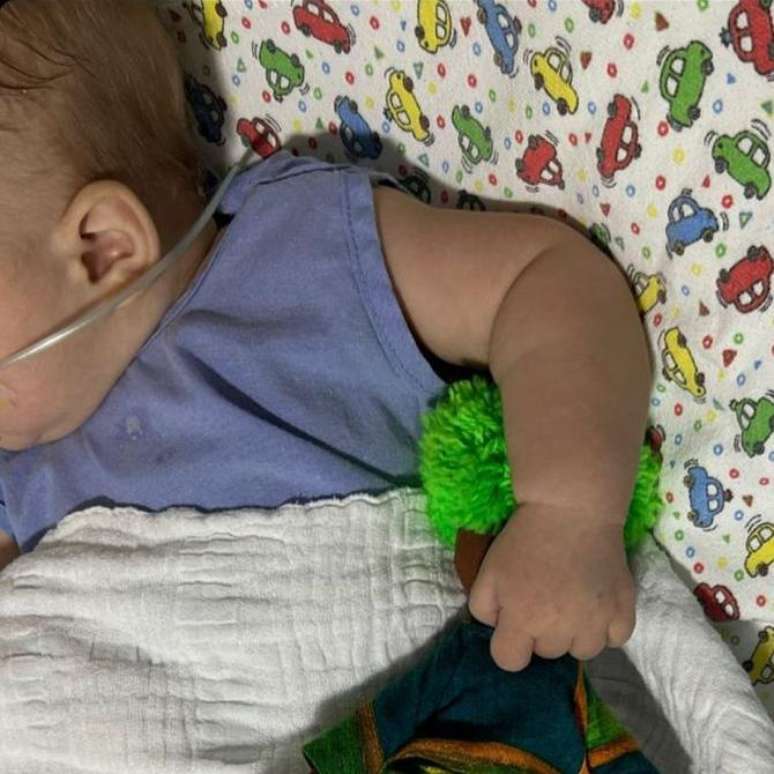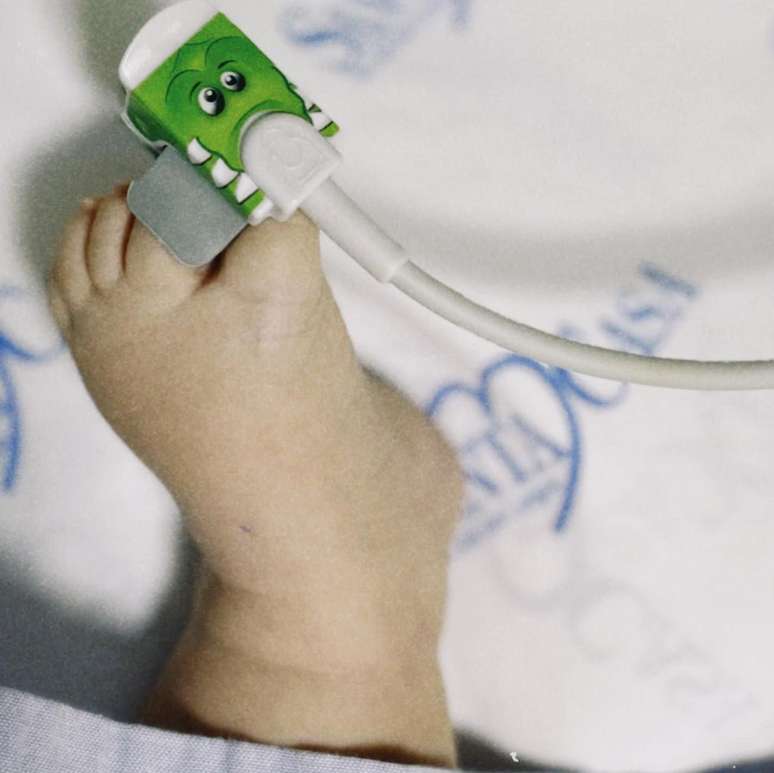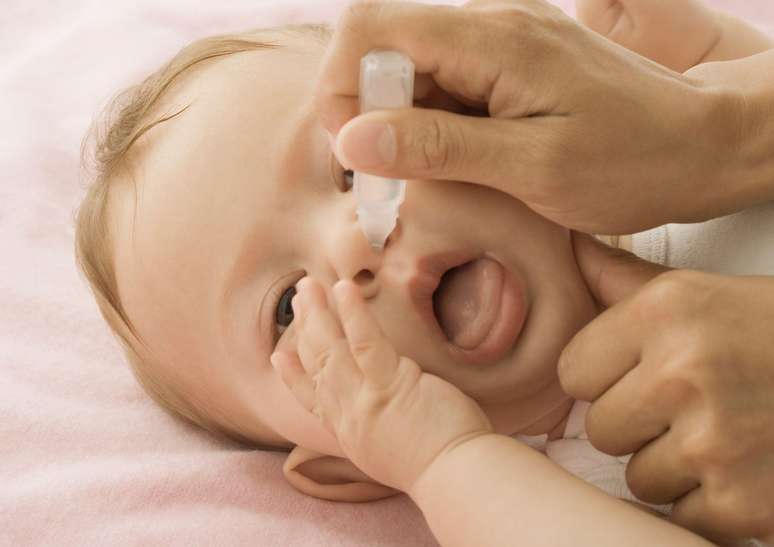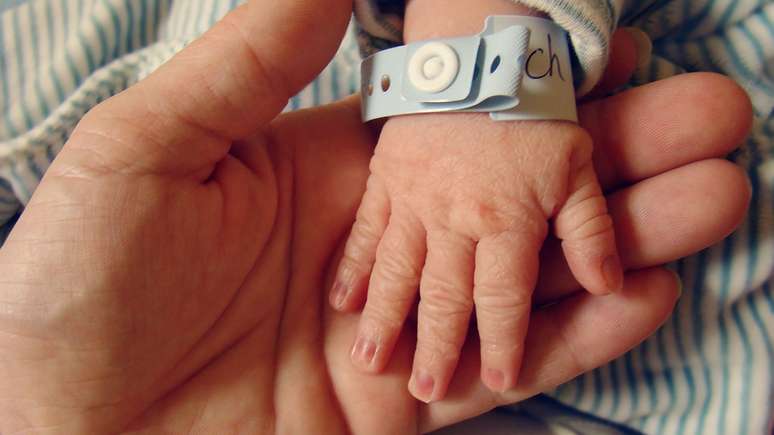Six-month-old Francisco spent two weeks intubated in hospital after developing bronchiolitis. According to doctors, the case could have been fatal if the family had not gone to hospital promptly.
When little Francisco showed the first cold-like symptoms in June this year, his parents immediately took him to hospital.
At the time, at the age of 6 months, the baby had already been diagnosed with asthma symptoms, so any sign of a cough or discharge caused alarm in the family.
After going to the emergency room, Francisco was sent home with an allergy diagnosis and some medications. But just 48 hours later, his condition worsened profoundly.
“He was panting a lot, with his chest rising and falling. He was clearly struggling to breathe,” says his mother, Camille Pasquarelli, 30.
“He also moaned a lot and had trouble sleeping,” recalls his father, Daniel Ferreira, 31. “That’s when we decided to go back to the hospital.”
As soon as he carried out the screening, it was found that the oxygen saturation in the child’s blood was very low and Francisco would have to be placed on mechanical respiration.
“He spent a few hours on oxygen, but he still wasn’t breathing properly. So the doctors decided to intubate him,” says Daniel.
Francisco spent more than two weeks in hospital diagnosed with bronchiolitis. During this period, he spent 13 days using mechanical ventilation, sedated.
“If I could leave one message for other parents, it would be to always pay attention to the little signs,” Camille says. “It was very important to pay attention to the changes in Francisco’s breathing and take him to the hospital immediately.”
“The doctor said if we had waited another day it could have been fatal.”
“The younger the child, the greater the commitment”
In addition to Francisco, another 18,172 children up to 2 years old were hospitalized in Brazil in 2023 with RSV (respiratory syncytial virus) through the end of October, according to Fiocruz’s InfoGripe Bulletin. In the same period, 222 deaths were recorded.
According to the Brazilian Society of Pediatrics, RSV is associated with up to 75% of cases of bronchiolitis, an inflammation that makes it difficult for oxygen to reach the lungs, and up to 40% of cases of pneumonia in children under 2 years old of age. (SBP).
“Bronchiolitis is a clinical condition characterized by inflammation that leads to narrowing of the lumen of the bronchioles. [ramificações finas responsáveis por conduzir o ar dentro dos pulmões]”, explains Marcelo Otsuka, coordinator of the Pediatric Infectious Diseases Committee of the Brazilian Society of Infectious Diseases.
“And the smaller the child, the greater the ventilation trade-off to be able to breathe properly.”
Premature babies and those with heart or lung problems are at risk. Furthermore, in some cases there may be a genetic predisposition to more serious episodes, explains the pediatric infectious disease specialist.

According to the US National Institute of Health (NIH), acute lower respiratory tract infections (including bronchiolitis) are among the five most common causes of death in children up to 1 year of age worldwide.
But the vast majority of minors suffering from bronchiolitis do not even make it to the emergency room and, among those who do, a small number need to be hospitalized.
But in more severe cases of the disease, the worsening of the condition can be sudden. “The peak of greatest severity tends to be around the fifth to seventh day, but depending on the child and other associated conditions, there may be significant worsening in the first 24 or 48 hours,” Otsuka says.
The main form of contamination occurs through respiratory secretions and contact, i.e. children who spend the day in closed places with other people, such as nurseries, are more susceptible to contagion.
The peak of bronchiolitis cases in Brazil tends to be in winter, precisely because during this period people tend to be more crowded, in places with little air circulation, facilitating transmission.
“In addition, the lower temperature reduces what we call ciliary movement of the lung, reducing the cleaning that these cilia do and favoring respiratory infections,” says Marcelo Otsuka.
Symptoms
In the case of newborns, it is common to notice cold-like signs in the initial stages of bronchiolitis. These include runny nose, cough, nasal obstruction, fever, irritability, and difficulty eating.
In these patients, because they are very young and cannot expectorate the discharge, symptoms may progress to more intense coughing, difficulty breathing, and wheezing. In these cases the advice is to contact your doctor as soon as possible.
The main sign that raised the red alarm for Francisco’s parents was the effort to expand the chest during inhalation or exhalation.
“His chest kept rising and falling differently. When we saw this we were already worried,” says Camille.
According to Marcelo Otsuka, this is a clear sign of breathing difficulty and should not be ignored.
Another worrying symptom is what doctors call wishbone retraction, which is the sinking of the neck region, just above the bone called the sternum.

Camille says the change in Francisco’s behavior also caught the family’s attention. “He’s always very smiley, but he was dejected and apathetic,” she says.
The boy’s parents also say the more than two weeks they spent with their son in the hospital were extremely challenging.
Throughout his intubation, Francisco was fed through a tube. Camille, however, continued to express milk to take to the hospital.
There is no treatment for the cause of bronchiolitis, so only symptomatic treatments can be performed.
“After the diagnosis of bronchiolitis, the doctors also identified a bacterial infection and he had to take antibiotics,” says Daniel. “He also had to undergo a blood transfusion because he was anemic.”
“It was very sad. Definitely one of the most difficult moments we have experienced,” he says. “But we tried not to keep our heads down, hoping it would get better.”
How to avoid?
In August, Pfizer submitted a request to the National Health Surveillance Agency (Anvisa) for the registration of the Abrysvo vaccine against respiratory syncytial virus (RSV).
The vaccine, already approved in the United States, is aimed at pregnant women and offers an immune response against infections caused by the virus in newborns and children up to six months of age.
According to Pfizer, clinical studies have shown that the immunological response generated by the vaccine was able to prevent 82% of severe forms of respiratory disease in children up to three months old, followed by 69% up to six months.
In Brazil the pharmaceutical company has also requested approval to protect elderly people over 60.

But even with vaccination, according to doctors, it is important to strengthen some measures that prevent children from contracting the disease:
- Always wash your hands properly when holding a baby;
- Avoid taking the child to places with poor ventilation;
- Do not stay with your child in places where tobacco smoke is present;
- Avoid exposing your child to people with respiratory symptoms;
- Disinfect potentially contaminated surfaces and objects.
Francisco’s parents say they have redoubled their care in this regard.
“We paid more attention to Francisco’s older brother, Bento. Every time he comes home from school I try to give him a bath or at least wash his hands well,” says Camille.
“It was probably Bento who brought the virus into the house, but we don’t want to prevent him from having contact with his brother.”
Dr. Marcelo Otsuka also recommends keeping children well fed and hydrated, as well as frequently clearing their airways, washing their nose and inhaling when necessary.
Children who already suffer from respiratory problems, such as asthma, chronic sinusitis or frequent allergies, should receive regular medical monitoring.
Source: Terra
Ben Stock is a lifestyle journalist and author at Gossipify. He writes about topics such as health, wellness, travel, food and home decor. He provides practical advice and inspiration to improve well-being, keeps readers up to date with latest lifestyle news and trends, known for his engaging writing style, in-depth analysis and unique perspectives.








